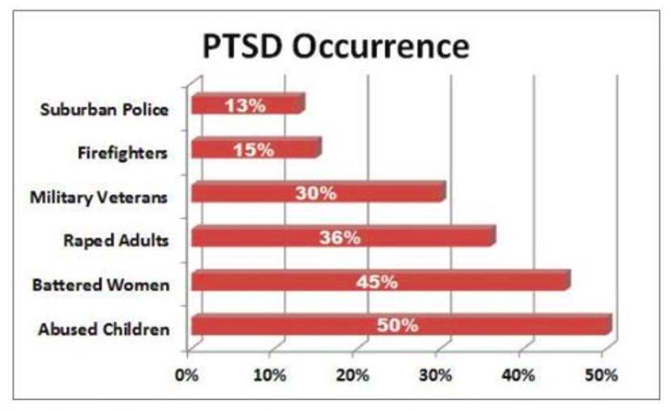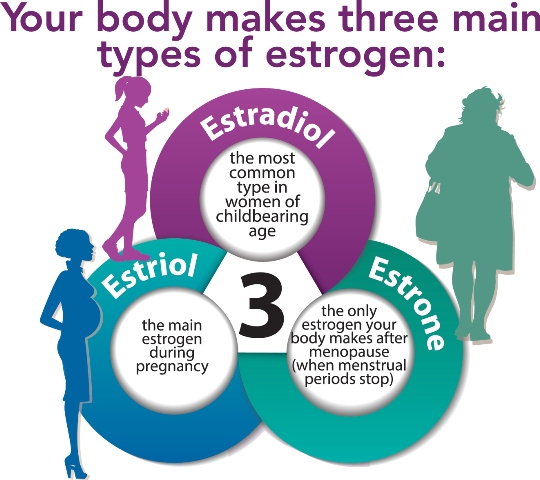I’m curious to what hormones, diseases, lack of nutrients, or any other mechanisms which can inhibit lipolysis.
Anyone have insight into this?
Thanks

I’m curious to what hormones, diseases, lack of nutrients, or any other mechanisms which can inhibit lipolysis.
Anyone have insight into this?
Thanks
Pharmaceutical drugs is one I can think of at the moment?
Besides insulin being an inhibitor, catecholamines and lipase seem to work together to create lipolysis?
For example fasting for too long a time within a short period of time could cause too much hormetic stress and the metabolism to rotate on axis in the opposite direction so it quits inducing lipolysis unless you spread out the time frames? Then you can do longer extensive fasting once you give it a sample?
Footnotes:
[1] “…Catecholamines are the only hormones with pronounced lipolytic action in man. …” …More
image link image link[2] “…During periods of fasting or stress, catecholamines are released by the sympathetic nervous system to activate lipolysis. …” …More (hormetic stress?)
[3] “…In conclusion, a decreased activation of the hormone-sensitive lipase complex appears to be the mechanism underlying a blunted lipolytic response of fat cells to catecholamine stimulation in elderly subjects. This finding may, explain the age-dependent decreased lipolytic response to exercise in vivo. …” …More
[4] “…Lipolysis is the process by which stored TGs are released as nonesterified FA (NEFA) [1]. It involves different regulators such as lipases, co-lipases, and proteins that coat the lipid droplet. …” …More
[5] “… These results show that triglycerides in human subcutaneous adipose tissue have a much slower turnover than in the rat epididymal fat pad. This is more pronounced at a more advanced age, which may contribute to the greater tendency to obesity with increasing age. The results furthermore suggest that, in these specimens taken from operated patients after 18 hours fasting, in spite of the low lipolytic potential, reesterification of free fatty acids is so low that it cannot match lipolysis and fatty acid outflow increases. An alternative explanation is partial hydrolysis of triglycerides. …” …More
[6] “…We have reviewed the evidence that effects of insulin and glucocorticoid underlie the chronic upregulation of leptin expression in obesity. Catecholamines chronically decrease leptin expression over the long term and may also decrease leptin secretion; in combination with declines in plasma insulin, these mechanisms probably contribute to declines in leptin during fasting. In addition, leptin levels are regulated over a time course of minutes (pulsitility) to hours (diurnal rhythm linked to meal timing). There is strong evidence that insulin, with a permissive role for glucocorticoids, plays a critical role in nutritionally induced variations in serum leptin levels. …” …More
[7] “…As the stress response is triggered and the body’s sympathetic nervous system (SNS) is activated, the adrenal glands release stress hormones like cortisol, while the sympathetic-adrenomedullary axis (SAM) is also triggered to release catecholamines. These circulate through the bloodstream and the brain. …” …More
[8] “…The most striking and possibly the most important effect of the catecholamines on lipid metabolism lies in their ability to accelerate acutely the mobilization of FFA from adipose tissue. This effect is attributable to hormone-stimulated conversion of an inactive lipase
in adipose tissue to its active form. …” …More
[9] “…Hormone-sensitive lipase (HSL) activity was first identified as an epinephrine-sensitive lipolytic activity in adipose tissue. …As the enzyme responsible for the release of free fatty acids (FFA) from adipose tissue, HSL is felt to play a pivotal role in providing the major source of energy for most tissues. …” …More
[10] “…Tyrosine Hydroxylase - rate-limiting enzyme in catecholamine synthesis. Catecholamines are tyrosine-derived hormones that are produced in the adrenal gland. They include epinephrine, norepinephrine, and dopamine and are used as neurotransmitters by the central and peripheral nervous system. …”…More
[11] How does insulin inhibit lipolysis?
Certain tyrosine kinase inhibitors (TKIs) inhibit RIPK2 in both macrophages and adipocytes thereby suppressing lipolysis, reducing inflammation and attenuating poor glucose control (dysglycemia) caused by bacterial cell wall components. …More

There are a number of inhibitors in industrial culture!
In addition to all that great material Bunny shared, I’d add that PTSD is associated with increased levels of catecholamines, which has ongoing repercussions for metabolic health and obesity - and is often entangled with SAD malnourishment and/or food scarcity. PTSD is highest in abused children, then battered women, followed by victims of sexual violence, then combat veterans, firefighters, and police. That’s tons of people who have PTSD and C-PTSD (two or more combined traumas) around 7.7 million folks in the U.S. alone (as estimated by epidemiologists and actual numbers are probably much higher), so the global numbers are staggering. The below visual chart displays U.S. groups most affected by PTSD (from 2009 NIMH stats) as a basic overview:

More on the co-factors here: https://www.nimh.nih.gov/health/statistics/post-traumatic-stress-disorder-ptsd.shtml#part_155468
and here:
Cortisol also plays an inhibiting role. There are also diseases that cause excess cortisol - Cushing’s syndrome and Cushing’s disease. There is also a role with increased oxidative stress and obesity in children, regardless of fitness levels - connected to metabolic disease, processed highcarb foods, etc.
Adrenaline is a neurotransmitter, a catecholamine, and a hormone. Cortisol is a corticosteroid hormone that is increased in low-oxytocin states (oxytocin is increased by loving relationships w/ humans and pets, along w/ mindfulness/meditation practices whether seated or moving, to name a few). Cortisol increases belly fat storage as an adaptive measure of some sort - particularly for midllife females. Rebalancing cortisol on a regular basis can be helpful in such a case. In fact, anything that reduces stress and anxiety will automatically balance hormones including estrogen and testosterone, and enhance muscle retention & development.
Additionally, there are lots of obesogenic chemicals in industrial culture that are wreaking their own havoc on everybody. One way in which obesogens can bring about weight gain is by acting as estrogen mimic and activating a receptor called peroxisome proliferator-activated receptor-y (PPARy) which is the master regulator of fat cell development in our bodies. There is credible evidence that environmental exposure to chemicals found in pesticides, flame retardants, and plastics during key phases of development (including during gestation) is a factor in the obesity epidemic.
Of interest to LCHF/ketoers in particular, endocrine disruptors such as phthalates leach into our food supply and are found in many fatty foods such as butter, milk and meats (esp high in grain-fed large industrially produced foods I imagine).
Natural bodybuilder & famous trainer Kevin Richardson has a well documented article on the topic of environmental obesogens:
On the bright side, for stress related conditions, Magnesium reduces anxiety and stress, and can be a critically helpful nutrient and important supplement along with the B vitamins (found in organ meats).
And there is evidence that compounds in the superfood Ginger (an adaptogen) lower cortisol and thus enhance lipolysis. (Contraindicated for those on pharmaceuticals such as statins and some diabetes meds though). Ginger and other herbs and biosalt veg (such as celery juice) can also be excellent detoxifiers, especially effective when combined with intense weight lifting and/or sweating using sauna or salt stones/salt footbaths to help the body release various chemicals and heavy metals.
I was thinking about obesogens (environmental and agricultural toxins etc.) and the effect the ginger has on adipose tissue when cold pressed vs. heat extracted and that fat cells are a storage facility for endocrine hormones not just lipid droplets (the mones get mixed in later or where their before?) so we now know fat cells are an endocrine organ?
What is also interesting catecholamines are lypo-potic (meaning it releases the lipids out of the fat cell) which compete with insulin (anti-lypo-potic meaning it’s stores lipid droplets once they are converted from glucose into a lipid droplet to be stored inside the adipose cell) and ginger seems to control how much gets stored or released i.e. inflammation (hormetic stress response) then you have leptin inside the adipose cell who’s release is controlled by how big the fat cell is and then there is catecholamines which comes by and activates inactive lipase or hormone-sensitive-lipase molecules to release the lips droplets or fat from storage within the adipose cell now if that’s true there must be some insulin that cannot be measured that is preventing this (or an unknown something), what is this something?
Then that makes me think this is not about how much fat we have in adipose cells, it is really about how big they are?
Why are they all big and inflamed?
Surrounding the fat cells we sometimes have macrophage infiltration or a immune response to a something that causes the adipose cell to malfunction and then we have that reverse electron transport thing with that little thing called a proton pump as discussed by Dr. Eades and Hyperlipid?
Apparently non nutritive sweetners can both inhibit lipolosis and promote lipogenesis.
Fascinating stuff pointing to the numerous processes going on according to one’s hormonal profile of the day and nutrient intake.
So stress>catecholamines>reduction in fat storage in some areas (for females though, PTSD’s cortisol trumps the process in some way - or estrogen intervenes to help buffer/mediate on behalf of fertility & survival - providing significant extra storage in female adipose in hips/thighs/belly regardless of bone structure).
It sure makes sense that Ginger’s a gatekeeper/guardian of fat cells along with a bunch of other cells (as is Turmeric, they’re cousins) - have never thought of that like that before! I’d wager that cells big with water (having replaced out fats and getting ready to shrink down) are cooled/not inflamed, and behave differently than fat cells big with fat/inflamed.
My worldview is that the body has an innate intelligence for healing when given half a chance (provided that basic needs like shelter & safety are met, along with stress management, and nutrient density) - and that biochemical science only scratches the surface of what is an ever-changing inner universe of elemental/biological/hormonal/environmental influences in the body. But it sure is fun to learn about what we do know, and the mysterious somethings. I don’t know much about peroxisome proliferator-activated receptor-y (PPARy) but it and insulin and other hormones have quite a conversation going on in the body. And certain choices we make, as well as conditions we deal with that range in their severity, randomness, and options can influence that conversation for better, or for worse.
Going beyond hormesis, homeostasis, and antifragility are what Romanian keto researcher Christian Vlad explores in his handy, in-depth 2017 book Stress and Adaptation In Physiology - Perturbation: Between Poison and Medication - I need to re-read it a few more times!
What is interesting also is the esterification and re-utilization of FFA’s from adipocytes which I think also apply to men?
Just because a gal has little bit more estrogen, why should that matter other than estradiol being the best one and that is the one that is exactly the same as testosterone only difference being it has benzene ring surrounding the testosterone molecule so they call it estradiol? Looking at the chart below it becomes estrone (adrenal glands, pituitary gland and also microbiome)?

[1] What is re-esterification?
Fatty acids released into the bloodstream result from the difference between hydrolysis of triglycerides in adipocytes during lipolysis and reutilization of the FFAs by fat cells through a futile cycle (<==DON’T FORGET THAT ONE?), termed re-esterification. FFAs are esterified with glycerol 3-phosphate. …More
[2] What is fatty acid esterification?
During lipolysis, triglyceride molecules are hydrolyzed to free fatty acids (FFA) and glycerol, which are released from the fat cell. Some of the FFA formed during lipolysis can be re-esterified to triglycerides (1, 2), whereas little or no glycerol is re-utilized by the fat cells (3). …More
Ah… estradiol! Makes sense. I don’t know the different types of estrogens, this helps - thanks!